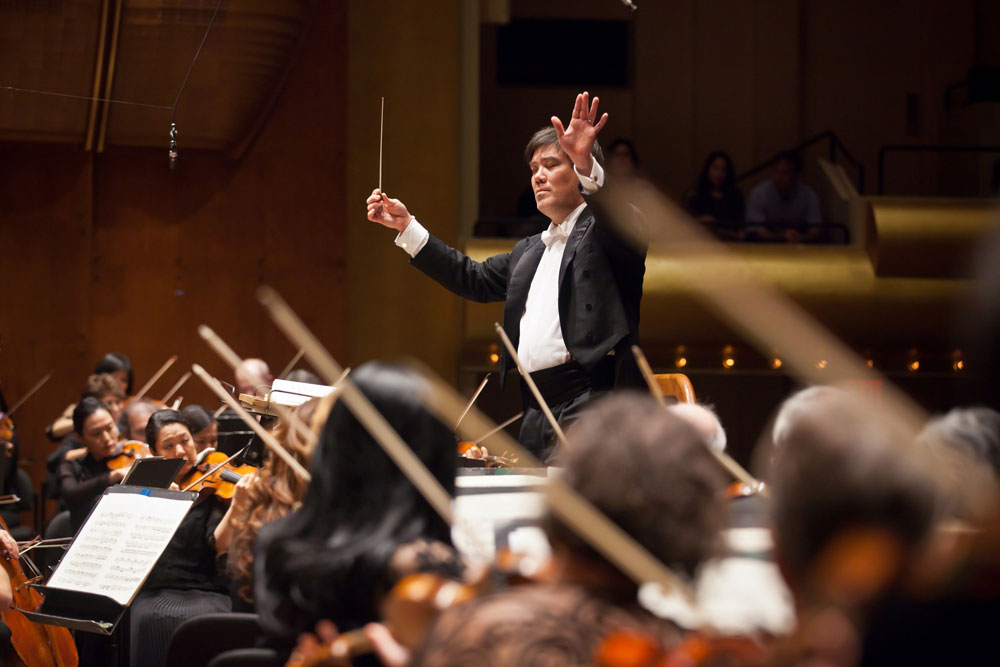
Credit: Chris Lee
New York’s Lincoln Center will swing to the sound of Wynton Marsalis, Aaron Copland, Igor Stravinsky and Dmitri Shostakovich, as Alan Gilbert and the New York Philharmonic present the first program in Gilbert’s Playlist at the end of May. A showcase for the themes and ideas synonymous with Gilbert’s tenure as Music Director, this four-week season opens with a look at the influence of jazz on orchestral music.
In this program, Alan Gilbert conducts the New York Philharmonic in a performance of Aaron Copland’s Clarinet Concerto, and Wynton Marsalis’ Swing Symphony, featuring the celebrated musician and composer himself, with his Jazz at Lincoln Center Orchestra. Also featured are Stravinsky’s Ragtime and Tahiti Trot by Dmitri Shostakovich – both works conducted by Case Scaglione.
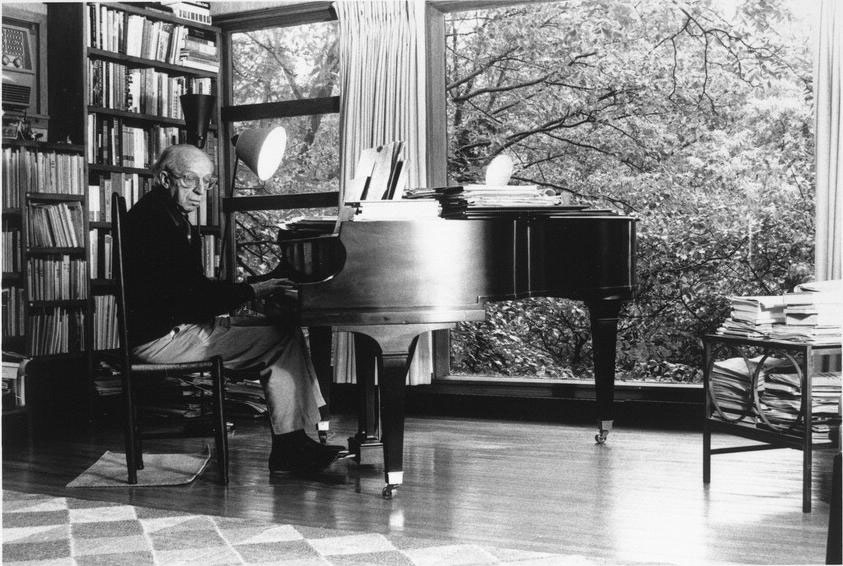
Via Wikimedia Commons
Aaron Copland’s Clarinet Concerto – written in 1947-48 – was commissioned by Benny Goodman, at a time when big band jazz was losing its popular appeal. Copland drafted the concerto whilst he was in Rio de Janeiro in 1947, so a hint of Latin influence doesn’t come as a surprise. It was first heard publicly in a broadcast by NBC on November 6, 1950, with Goodman on clarinet and Fritz Reiner conducting the NBC Symphony Orchestra. In 1951 the work was choreographed for New York City Ballet by Jerome Robbins for his ballet, Pied Piper. The soloist in this performance is Mark Nuccio, Acting Principal Clarinet of the New York Philharmonic.
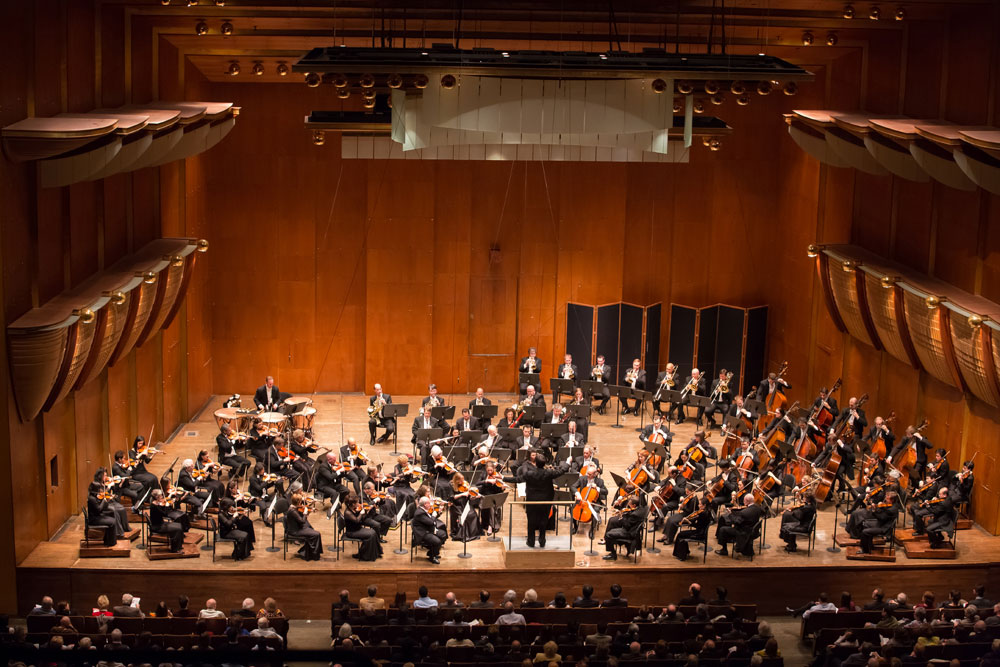
Credit: Chris Lee
Alan Gilbert has been Music Director of the New York Philharmonic since 2009. The first native New Yorker to hold this post, he is well known for the creativity of his programming. He has also established artistic partnerships, introducing the position of The Marie-Josée Kravis Composer-in-Residence – held by Christopher Rouse during this 2012-13 season – and The Mary and James G Wallach Artist-in-Residence – currently held by pianist Emanuel Ax. He has instigated an annual, multi-week festival which this season is The Bach Variations, in collaboration with 92nd Street Y, and CONTACT! a series in which Philharmonic musicians perform works by leading and emerging contemporary composers in some of the more intimate venues in New York.
“One thing I’ve been interested in pursuing with the Philharmonic,” says Gilbert, “is collaboration with important cultural institutions across New York City. Jazz at Lincoln Center with Wynton Marsalis were an obvious choice. Wynton is such an iconic figure: a great artist, instrumentalist, teacher, and communicator who really believes in the power of music and the importance of bringing people into our world.”
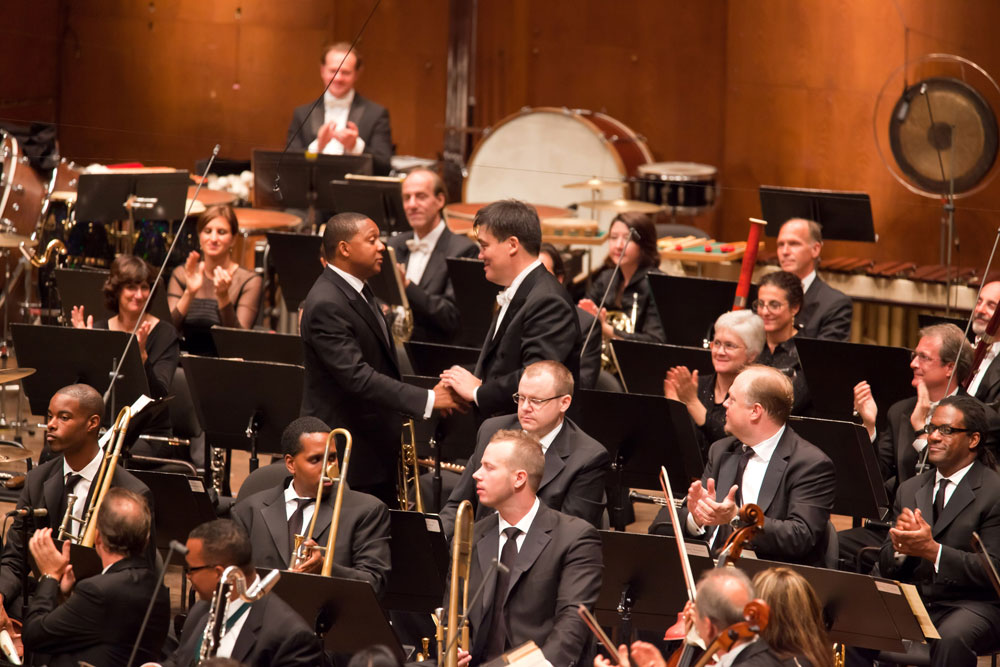
Credit: Chris Lee
Bandleader, educator and a leading advocate of American culture, Juilliard-educated Marsalis is also an outstanding classical performer, and the first jazz composer to earn a Pulitzer Prize. His versatility extends from music for quartets to big bands, from chamber music ensembles to symphony orchestras, and from tap to ballet. He is music director and trumpet of the Jazz at Lincoln Center Orchestra, and managing and artistic director of the Jazz at Lincoln Center program – which he co-founded in 1987. His orchestra, comprising 15 of the finest soloists, ensemble players and arrangers in jazz today, has been resident there since 1988.

Credit: Frank Stewart
Wynton Marsalis describes his Symphony No 3 (the Swing Symphony) as “a symphonic meditation on the evolution of swing”. A co-commission by the New York Philharmonic, the Berlin Philharmonic, the London Symphony Orchestra and the Los Angeles Philharmonic, it was premiered on the opening night of the New York Philharmonic’s 2010 season, under the baton of Alan Gilbert, of whom The New York Times wrote that he “seemed totally in his element, conducting with a mix of cool command and jazzy swing”, and that the Philharmonic “played with verve and color, never sounding like classical music stiffs”.
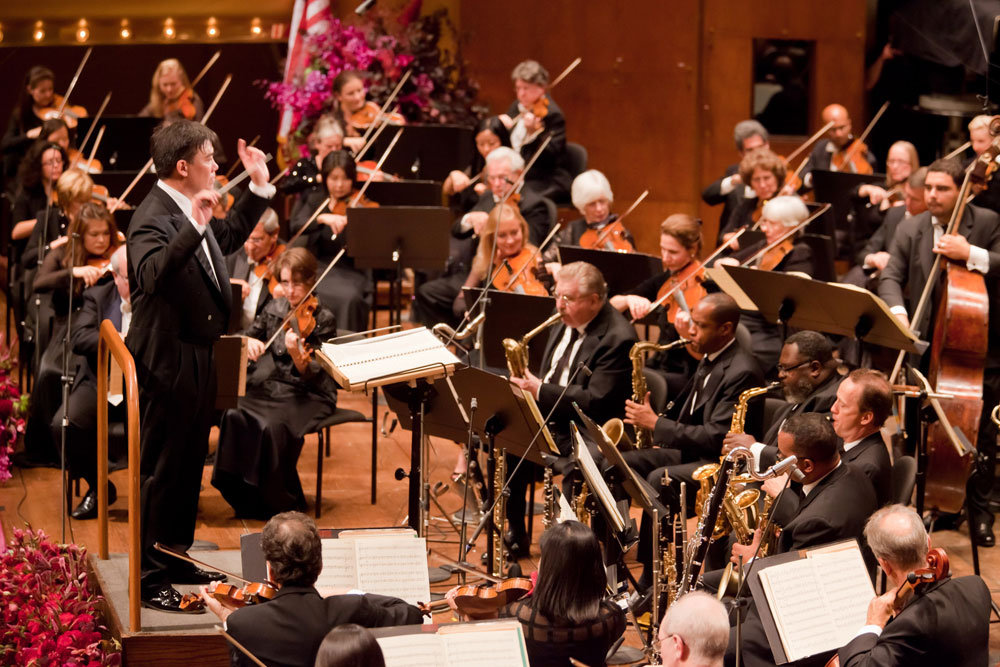
Credit: Chris Lee
This first Gilbert’s Playlist program opens with Stravinsky’s Ragtime, followed by the Shostakovich Tahiti Trot – both led by Case Scaglione, Assistant Conductor of the New York Philharmonic since 2011, the year in which he was named a Solti Fellow by the Solti Foundation US, an award given only three times in the history of the foundation.
Stravinsky wrote his Ragtime for Eleven Instruments in 1917-18, when jazz was all the rage in Paris. He called it an “essay in jazz portraiture”. The origins of the work, according to music historian, Barbara Heyman, came via conductor Ernest Ansermet, who – returning from the Russian Ballet’s American tour in 1918 – handed Stravinsky a “bundle of ragtime music in the form of piano reductions and instrumental parts”, which became the composer’s inspiration for his L’histoire du soldat, included in which is a section called Ragtime. It was twice used by George Balanchine to create works for New York City Ballet – Ragtime I in 1960 and Ragtime II in 1966.
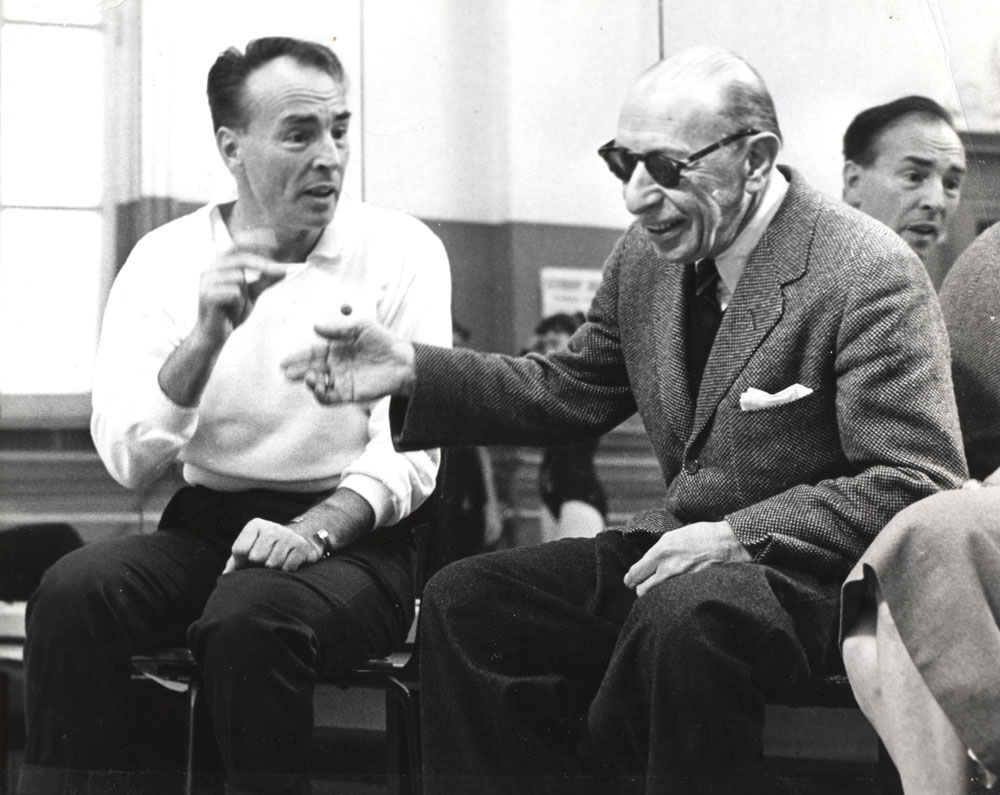
Credit: Martha Swope courtesy New York City Ballet
It’s followed by Tahiti Trot – an orchestration by Shostakovich of the song, Tea for Two, from the Vincent Youmans musical, No, No, Nanette. It was deemed sufficiently “decadent”, when it was written in 1927, for the composer to be chastised by the then Soviet régime. Shostakovich wrote it in response to a bet made with him by the conductor, Nikolai Malko, who apparently set him a challenge to orchestrate the piece – known in the Soviet Union as Tahiti Trot – within an hour. Shostakovich delivered on the bet within 45 minutes. It was premiered by the Leningrad Philharmonic in Moscow in late 1928 and became enormously popular with audiences and dance bands. Shostakovich also used it at the beginning of Act II for his 1929-30 ballet, The Age of Gold.
The first Gilbert’s Playlist program takes place on May 31 at 11.00 am and June 1 at 8.00 pm. There’s also a Rush Hour Concert on May 30 at 6.45 pm. Led by Alan Gilbert, it features Swing Symphony with Wynton Marsalis and the Jazz at Lincoln Center Orchestra.
The second program takes place from June 6 to 11, with Dallapiccola’s Il Prigioniero, featuring Gerald Finley, Patricia Racette and Peter Hoare, and Prokofiev’s Violin Concerto No 1, with soloist Lisa Batiashvili.
In the following program – from June 20 to 22 – the Haydn Piano Concerto No 11 is performed by Emanuel Ax, there’s the New York premiere of Christopher Rouse’s Symphony No 3, and the final work is A Ring Journey, Alan Gilbert’s own synthesis of orchestral music from Wagner’s Ring Cycle, based on the arrangement by Erich Leinsdorf.
The final Playlist program – from June 27 to 29 – features A Dancer’s Dream: Two Works by Stravinsky. It’s described as a “theatrical reimagining” of two ballets – The Fairy’s Kiss and Petrouchka – combining orchestral music, ballet, puppetry and filmmaking. Directed by Doug Fitch and created by Giants Are Small, it stars New York City Ballet principal dancer, Sara Mearns.
All performances take place at Avery Fisher Hall, on the north side of Lincoln Center, at Broadway and West 65th Street
For further information and ticketing, please visit the New York Philharmonic website nyphil.org
